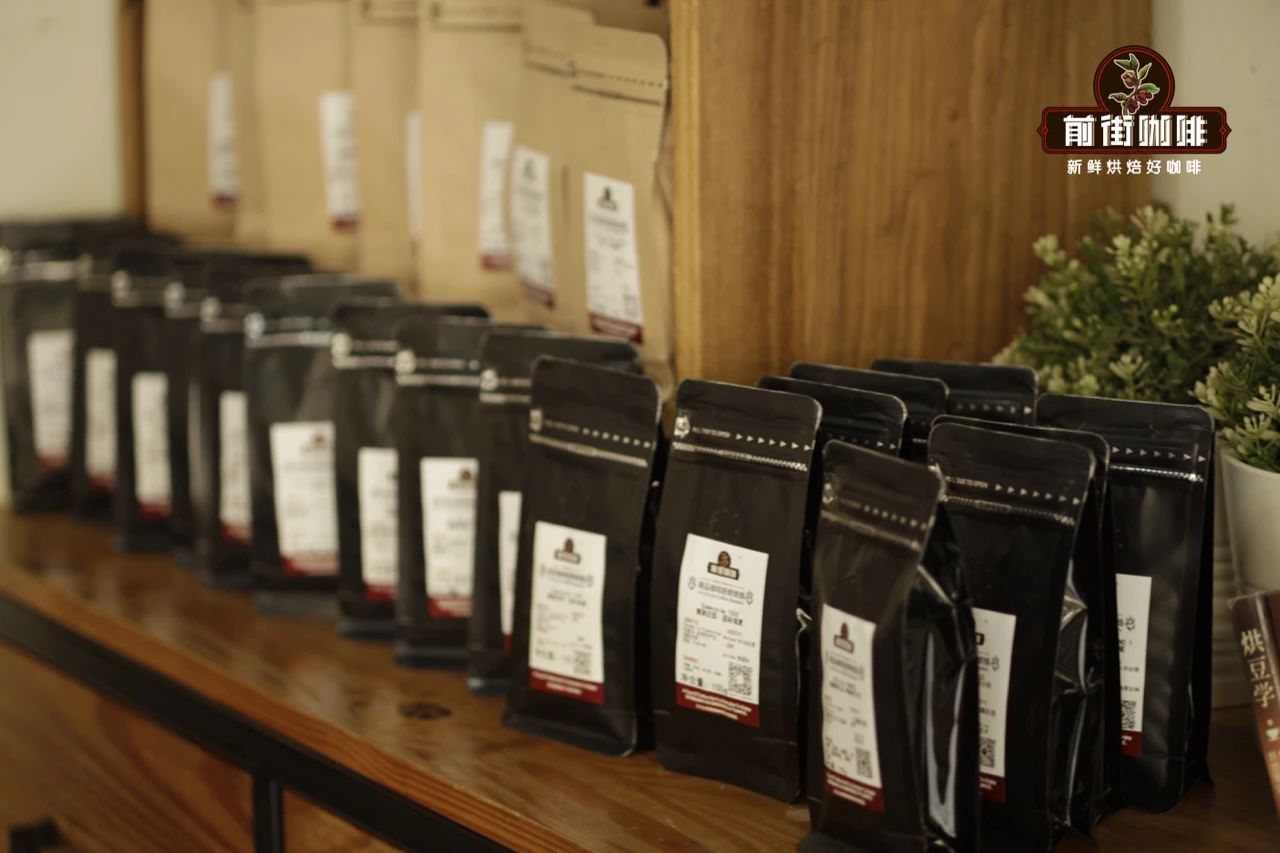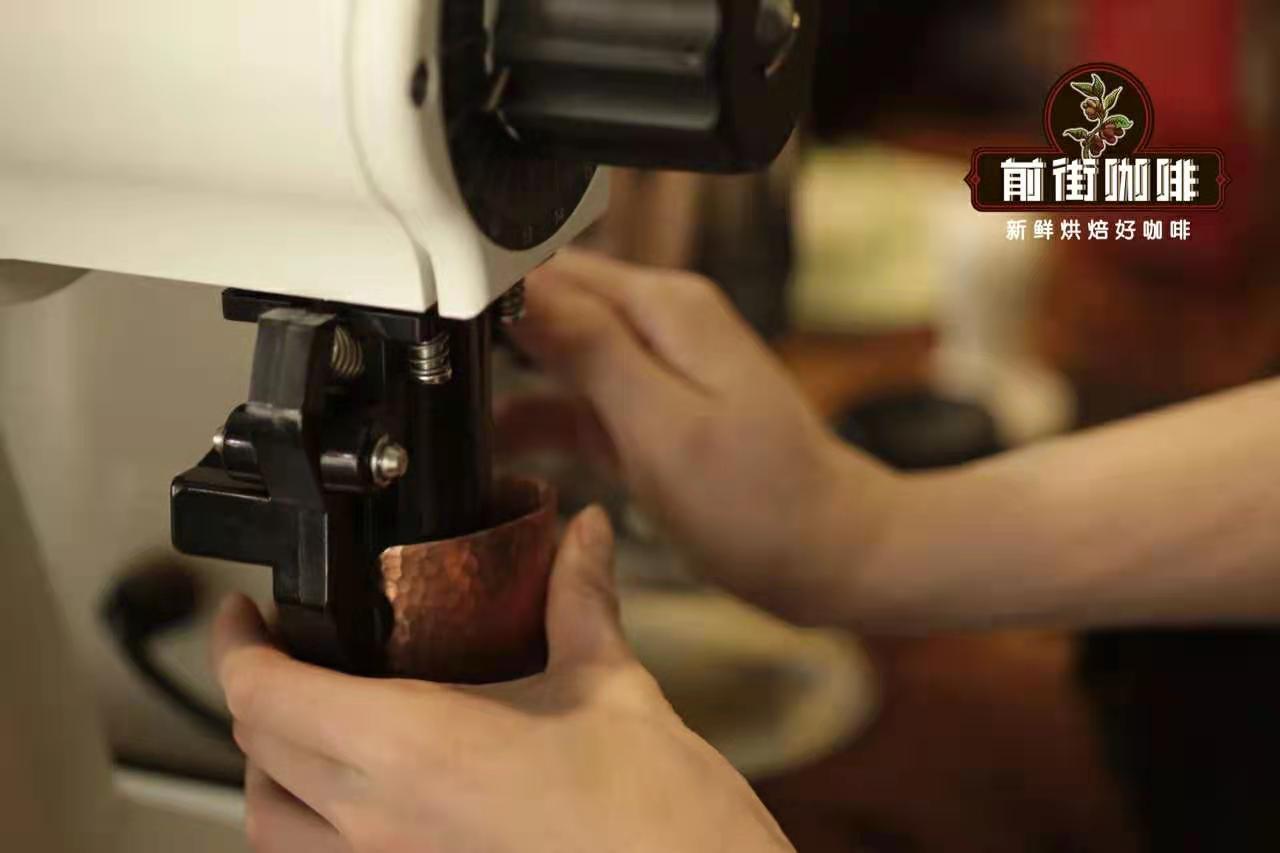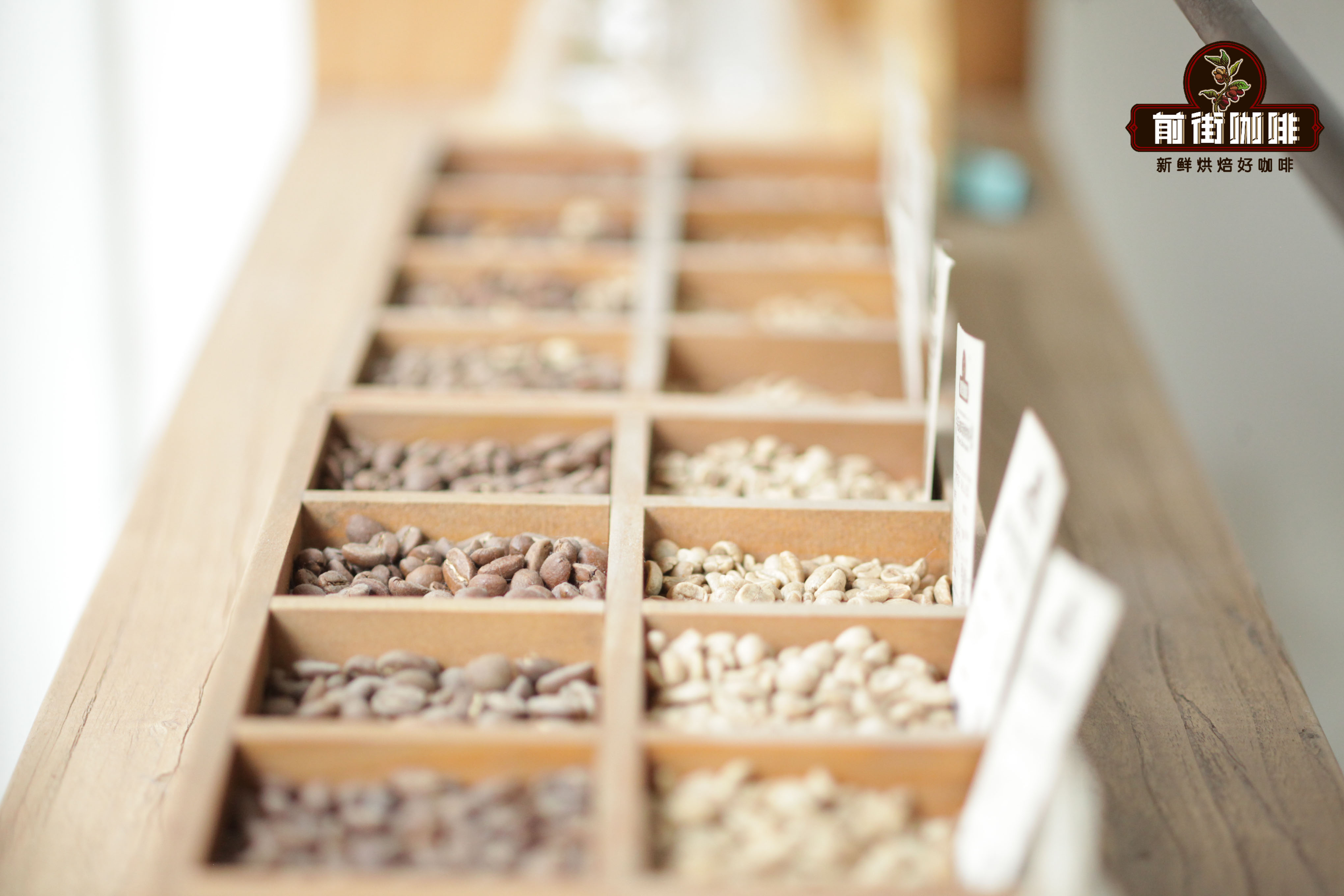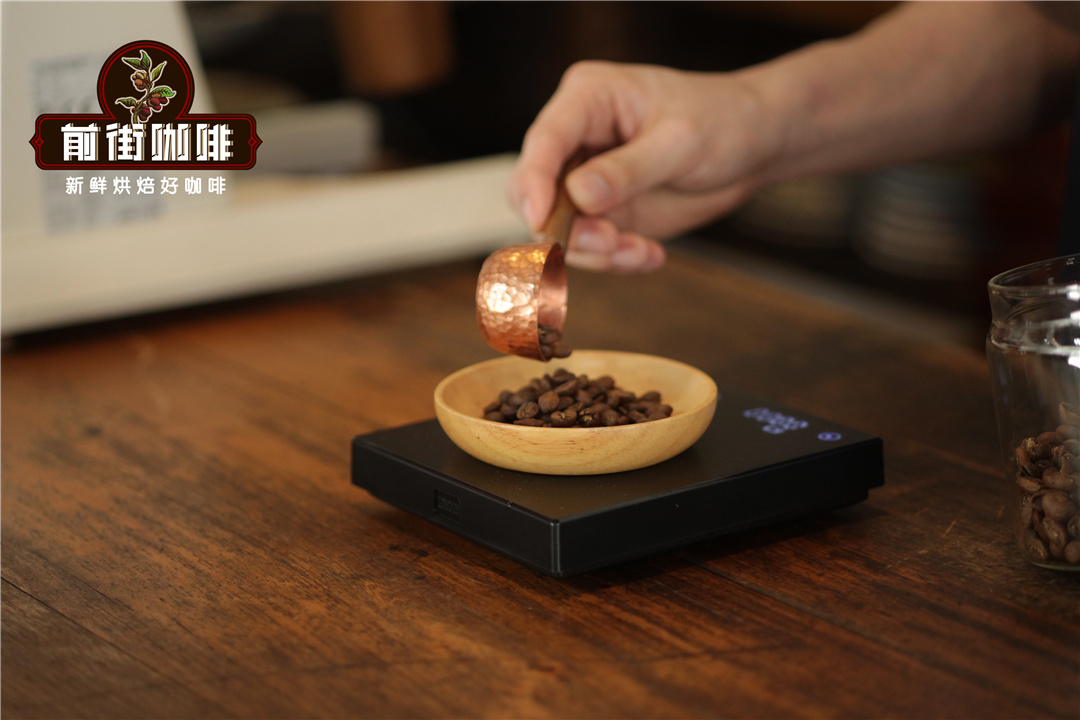What's the difference between individual coffee beans and mixed coffee beans? Can I make coffee beans by hand?

Professional coffee knowledge exchange more coffee bean information please follow the coffee workshop (Wechat official account cafe_style)
Individual coffee beans and mixed coffee beans
In many cases, we think that individual coffee beans are suitable for hand-brewed coffee beans in a similar way, matching coffee beans with espresso until someone uses them on espresso, that is, SOE coffee. But it is rare to use blended coffee on hand-brewed coffee.

Let's first understand the difference between individual coffee beans and blended coffee beans.
Single-product coffee beans, that is, single-origin coffee beans, although many baristas and cafes use the name "single-product coffee", the name is easily misunderstood as a single variety of coffee beans. Qianjie coffee is more likely to say single-origin coffee beans. However, there is no harm in both. The characteristics of individual coffee are just like Ms. Erna Knudsen's concept of boutique coffee. Because it is a single producing area, it has obvious regional flavors of producing areas, such as the sour berries of Kenya, the herbal spices of Indonesia, and the citrus and white flowers of Yejasuefi.
Blending coffee beans, that is, mixed coffee beans in multi-producing areas, the main purpose of blending coffee is to maintain a stable flavor and balanced taste, because coffee fruit is always a kind of crop. Every year, the flavor of coffee fruit is unstable because of climatic and environmental problems, which may be sweeter this year and not so sweet next year, and mixing several kinds of coffee beans can solve this problem very well. It can at least keep the flavor of the coffee tasted every year consistent.

Many people think that blending beans is a product derived from suppressing costs and will be inferior to single beans in flavor. There is no denying that business cost is a factor in the blending of coffee, but it is not the most important one. In fact, it is the roaster or barista who wants to take advantage of the characteristics of coffee from different producing areas to create a unique flavor or balanced taste. Therefore, in fact, in order to make formula coffee, we must first taste coffee from different places and have an in-depth understanding of the flavor of coffee in order to construct a delicious formula.
Can I make coffee by hand with beans?
The rise of a single place of origin often makes people ignore the charm of matching. Mixed beans are often hung with the stereotype of Italian coffee beans, full-bodied, poor quality and roasted flavor. What exactly does it mean to match? Unlike a single origin, blending means mixing a variety of different coffee beans together, which is usually different from the region of origin. For example, Qianjie Coffee mixes Colombia with Brazil to form a boutique blend of coffee beans, or it can be treated differently. Many cafes mix washed coffee beans with sun-dried coffee beans, both to keep the washed coffee clean and to have the tone of berries.

What is the purpose of the match? Why mix different coffee beans? This may be one of the sources of stereotype. Traditional blending has several purposes. One is to create a formula with a stable flavor, diluting the importance of each coffee bean by mixing different coffee beans together. When one of the coffee beans in the blend bean is out of stock or the taste does not live up to expectations, it can be quickly replaced with another coffee bean. The second is to reduce costs. just now we said that when different coffee beans are mixed together, then the existence of each kind of coffee is not so obvious, so mix a small amount of poor quality coffee beans, coupled with a deeper degree of roasting, in order to achieve the effect of reducing costs.
However, with the development of boutique coffee, the purpose of blending has become more and more. Many coffee brands will mix different coffee beans in order to create a flavor that is not found in a single place of origin. On the stage of the 2016 World Barista Competition, Yoshihiro Iwaki, from Japan, preferred to call it "Interweaving coffee" rather than Blend coffee, because the focus is not to cover up or modify the shortcomings of a few beans, but to highlight a higher level and balance by superimposing their respective strengths.
So blended coffee is only a form of coffee mixed with coffee, and blended coffee beans can of course be used as hand-brewed coffee. Front Street Coffee combines a Honduran sherry barrel mixed with sun-treated Yega Chefe into a warm blend. Shirley barrel coffee beans have a distinct oak barrel aroma, reminiscent of wine aroma. Sun-treated Yega Chefe gives this blend bean more acidity, which is used to make hand-brewed coffee with a more balanced tone of wine, black cocoa and citrus acid.
How to customize a hand to match coffee beans?
I don't know if you have ever tried, online bought several bags of coffee beans, when each bag is used less than once, you mix these bags of coffee beans together in the spirit of not wasting, sometimes there will be an amazing taste. Although you didn't mean it this time, you accidentally created a delicious hand-made coffee bean recipe.
In the communication with some guests, Qianjie also found that they have the habit of mixing 2-3 coffee beans by hand, so that they can complement each other and achieve the flavor and taste they want. Of course, Qianjie will also share some personal diy matching experience.
1. Try to mix coffee beans with the same roasting degree. Deep-roasted coffee tends to mask lightly roasted beans, such as moderately roasted nuts mixed with lightly roasted fruit beans, the final flavor will be partial to nutty flavor, and it is difficult to coordinate the flavor.
2. the blending ratio is recommended to use the main and auxiliary ratio of 7:3 or 6:4, first determine the main tone flavor, and then according to the missing part of the bean, add to fill this part of the auxiliary coffee beans. For example, if we want the coffee to have a delicate floral flavor, we can use the Panamanian rinse summer as the tone, but at the same time we want to have more full berry flavor and taste, then we can mix coffee beans like sun Sidama.
For more boutique coffee beans, please add private Qianjie coffee on Wechat. WeChat account: kaixinguoguo0925
Important Notice :
前街咖啡 FrontStreet Coffee has moved to new addredd:
FrontStreet Coffee Address: 315,Donghua East Road,GuangZhou
Tel:020 38364473
- Prev

What are the characteristics of Starbucks' autumn coffee beans? How to brew the autumn coffee mixed with Latin American coffee
Professional coffee knowledge exchange more coffee bean information please follow the coffee workshop (Wechat official account cafe_style) Starbucks autumn comprehensive coffee bean characteristics? How to make the autumn coffee mixed with Latin American coffee by hand? The coffee of choice is a medium-bodied Latin American mixed coffee, which is characterized by its
- Next

How do Colombian coffee taste Colombian coffee beans? Colombian coffee culture
For more information on coffee beans, please follow the Coffee Workshop (official Wechat account cafe_style). According to the Organization of Aboriginal States of Colombia (Organizacin Nacional Indgena de Colombia,ONIC), there are 102indigenous tribes in Colombia that speak 64 different languages. 710 original areas have been set up in 228 administrative regions across the country.
Related
- Detailed explanation of Jadeite planting Land in Panamanian Jadeite Manor introduction to the grading system of Jadeite competitive bidding, Red bid, Green bid and Rose Summer
- Story of Coffee planting in Brenka region of Costa Rica Stonehenge Manor anaerobic heavy honey treatment of flavor mouth
- What's on the barrel of Blue Mountain Coffee beans?
- Can American coffee also pull flowers? How to use hot American style to pull out a good-looking pattern?
- Can you make a cold extract with coffee beans? What is the right proportion for cold-extracted coffee formula?
- Indonesian PWN Gold Mandrine Coffee Origin Features Flavor How to Chong? Mandolin coffee is American.
- A brief introduction to the flavor characteristics of Brazilian yellow bourbon coffee beans
- What is the effect of different water quality on the flavor of cold-extracted coffee? What kind of water is best for brewing coffee?
- Why do you think of Rose Summer whenever you mention Panamanian coffee?
- Introduction to the characteristics of authentic blue mountain coffee bean producing areas? What is the CIB Coffee Authority in Jamaica?

